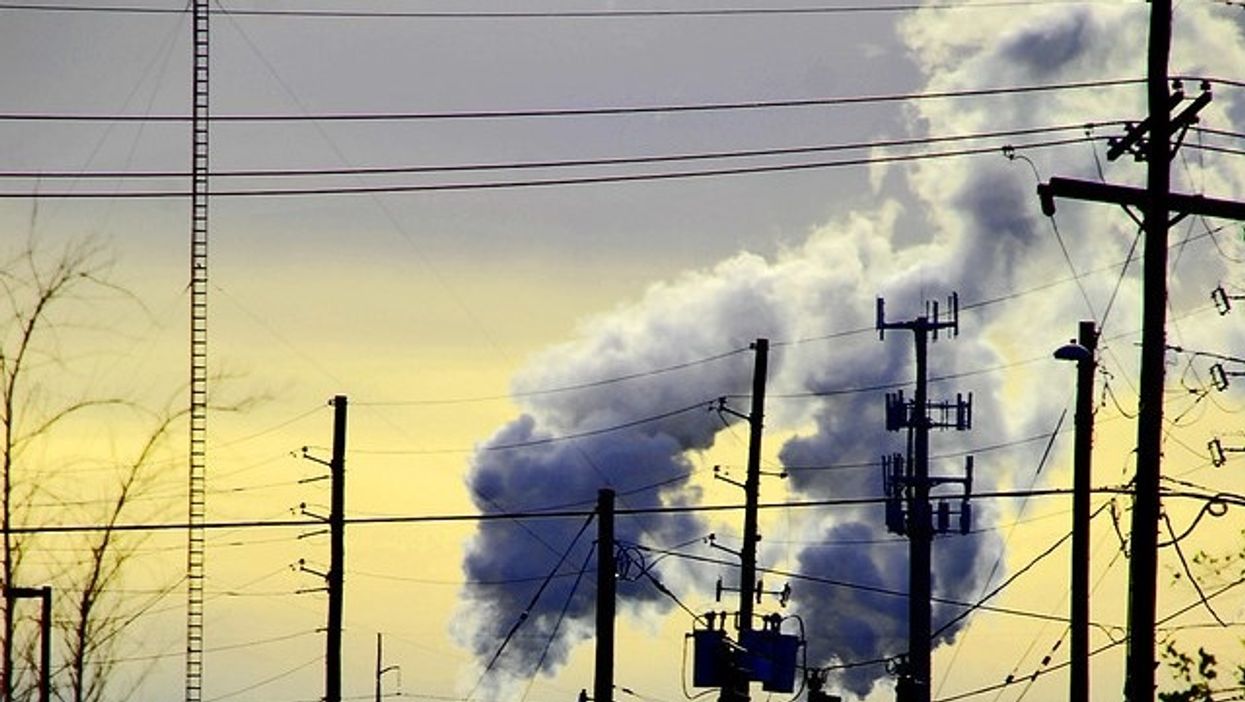Trump Appointees Permit Higher Soot Emissions, Increasing Covid-19 Mortality

Reprinted with permission from DCReport.
A new Harvard study has found that long-term exposure to microscopic soot in the air appears to be associated with higher death rates from the coronavirus.
But Trump's EPA has recommended keeping the 2012 standards for microscopic soot that are linked to an estimated 45,000 deaths a year.
The plan overrides advice from EPA staff scientists.
"I do think it's unwise to roll back regulatory pollution standards at a time when we know there is a virus that is attacking the lungs," said Harvard biostatistician Francesca Dominici.
Microscopic soot, or particulate matter, is about 1/30th the width of a human hair. The pollution comes from power plants, cars, trucks, wood-burning stoves and wildfires. The particles can enter the lungs and are linked to heart attacks, strokes, aggravated asthma and premature deaths.
Microscopic soot comes from power plants, cars, trucks, wood-burning stoves and wildfires and is linked to heart attacks, strokes, aggravated asthma and premature deaths.
The EPA is required by law to study the latest science about particulate matter pollution and public health every five years so the EPA administrator can set a standard to protect public health with an adequate margin of safety.
Former EPA Administrator Scott Pruitt removed the process of assessing air quality standards from the EPA Office of Research and Development which has much of the EPA's scientific expertise. Pruitt moved it to Office of Air and Radiation, then headed by attorney Bill Wehrum.
Andrew Wheeler, who replaced Pruitt, fired scientists on a panel set up to study particulate matter. The committee making recommendations about microscopic soot is led by consultant Tony Cox who wrote a discredited study that claimed soot in the air can be beneficial. The panel has no statisticians, experts in modeling risk assessment or epidemiologists.
Harvard's 'Bogus Analysis'
Historically, Harvard's public health studies have been vital for EPA public health rules, but Cox trashed the Harvard study. He called it "not a model that is ready for prime time" and a "bogus piece of analysis."
"I would have zero confidence in the published results of this study because its interpretation, design and analysis are fundamentally flawed," Cox said.
Since Trump took office, the concentration of fine particles of soot, or particulate matter 2.5, has increased 5.8%. The number of "unhealthy air days" in major cities, based on smog and PM 2.5 levels, rose to its highest level since 2012.
Industry groups that have urged the Trump EPA against tightening the rule include the American Petroleum Institute, for which Cox has done consulting work.
Save 12,000 Lives a Year
The current EPA limit for microscopic soot is 12 micrograms per cubic meter. An unofficial panel assembled by the Union of Concerned Scientists recommended lowering that limit to between 8 and 10 micrograms per cubic meter. Reducing the soot standard to 9 micrograms per cubic meter could reduce deaths by up to 27% or about 12,150 people a year.
The Harvard study, whose lead authors are doctoral student Xiao Wu and assistant professor Rachel Nethery, is the first nationwide study to estimate the relationship between long-term exposure to microscopic soot and COVID-19 death rates.
The study looked at 3,087 counties covering 98% of the population. At that time, in late April, there were just 45,817 deaths. It found an 8% increase in the COVID-19 death rate associated an increase in microscopic soot of 1 microgram per cubic meter.
Earlier studies also have found connections between pollution and deaths during pandemics. During the 2003 SARS outbreak, locations in China with a moderate or high long-term air pollution had SARS death rates 126% and 71% higher, respectively, than locations with low air pollution indexes.
Studies found exposure to microscopic soot associated with deaths during the H1N1 influenza pandemic in 2009. Historical data shows a relationship between air pollution from burning coal and deaths during the 1918 influenza pandemic.
- Pandemic Is Slowing Carbon Emissions — And That's A Good Thing ... ›
- The Rainbows Behind The Coronavirus Crisis - National Memo ›


